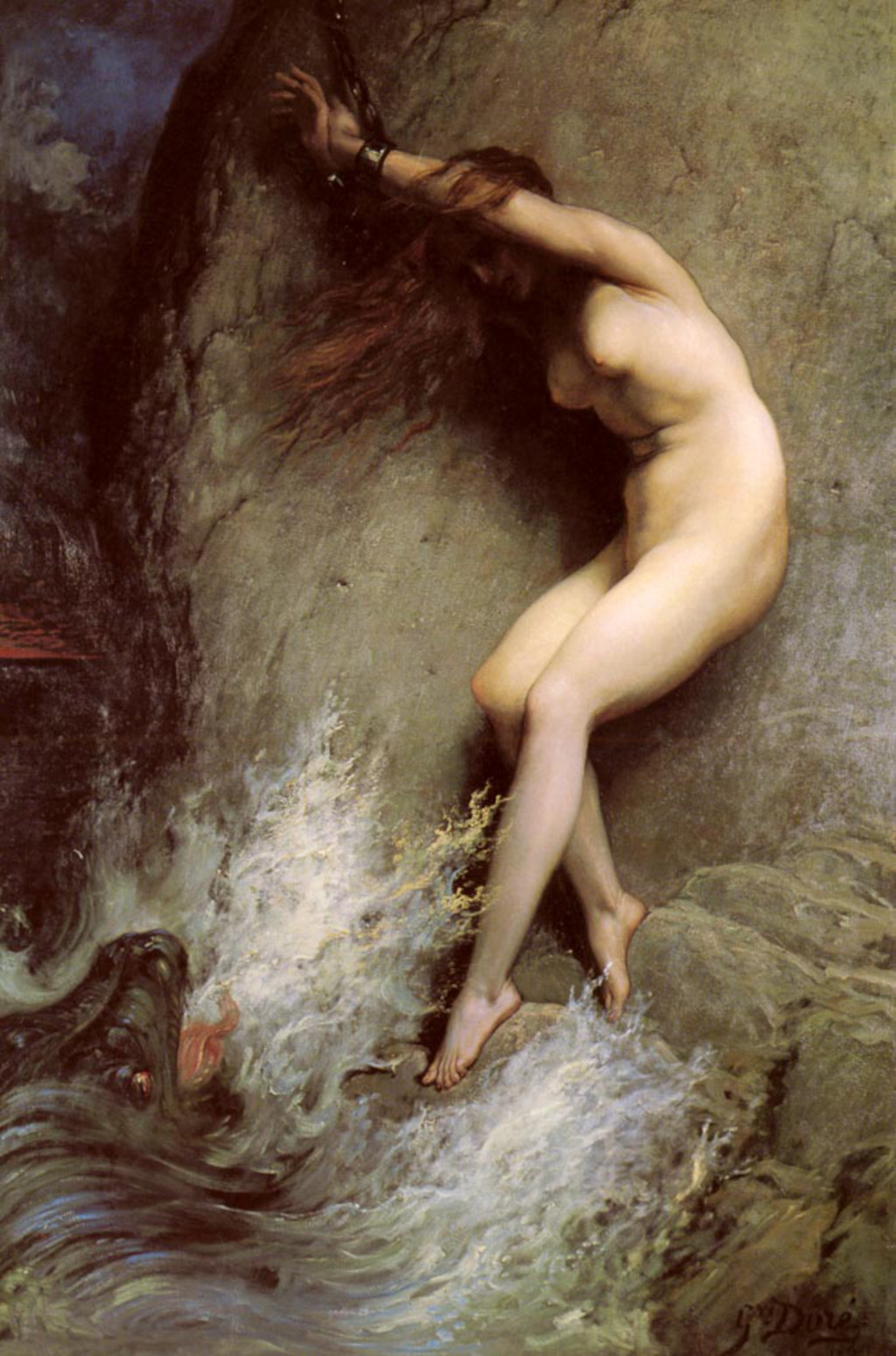Andromeda was completed by Gustave Doré in 1869, at which point he would have been in his late thirties. It remains amongst his most famous paintings.
The artwork is believed to reside today within a private collection, and so access to it can be limited. It is a huge piece, 256cm in height and around 173cm in width. It was constructed entirely in oils, which was the most common medium that he used for his paintings. The subject of Andromeda comes directly from Greek Mythology, and the character found here was the daughter of the king of Aethiopia, Cepheus. The story goes that she is chained to a rock as a sacrifice, but is later saved by Perseus, who then marries her. One can see the same narrative within this painting, with the lady's wrists tied up in the top left corner of the painting. She appears to be struggling to either escape, or to stay out of the water which laps against the rocks below her feet. It truly is a seen of desperation, leaving an opportunity for Perseus to arrive and save the day.
Andromeda is particularly vulnerable in this artwork, with no clothes to speak of and a very precarious position as the waves continue to overwhelm her. Although relatively young at the time of this painting, Doré had clearly mastered many aspects of oil painting. The figurative work is particularly impressive and in other examples from his career he was also accomplished in landscape painting as well. The artist focused on literature within his illustrations and would sometimes extend the same topics into his paintings as well. It is unclear as to why the artist needed such a large canvas for this piece, because there is relatively detail added. It may simply have been that he liked working with large canvases at this point, particularly because he was used to smaller pieces in his other mediums, such as engraving and drawing.
Andromeda remains the artist's most famous mythological painting, and is a memorable piece that deserves academic recognition. Indeed, the topic would be taken on by many other artists within art history, both before and after Doré's own contribution. Today we regard him as essentially a highly talented illustrator who also achieved some success in other art forms too. He loved to paint, however, and would grow frustrated at how academics at the time would not give the same level of respect to either his sculptures or his oil paintings. His main body of work with oils was actually in landscapes, though there were also many other history paintings and mythological pieces such as this in which he could demonstrate his considerable talents as a figurative artist.





